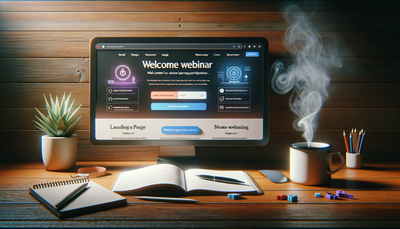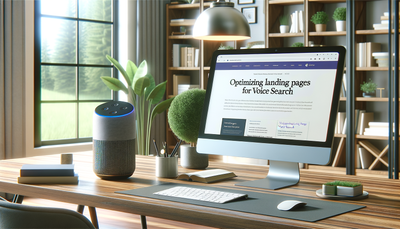10 Essential Elements of a High-Converting Landing Page
Creating a high-converting landing page is crucial for any successful online marketing campaign. This article explores the 10 essential elements that can significantly boost your landing page's performance. From captivating headlines to persuasive call-to-action buttons, we'll delve into the design principles, content strategies, and psychological triggers that make a landing page truly effective. Whether you're a seasoned marketer or just starting out, understanding these key components will help you craft landing pages that not only attract visitors but also compel them to take action. By implementing these proven techniques, you can optimize your landing pages for maximum conversions and achieve your marketing goals more efficiently.Table of Contents:

1. Compelling Headline
The headline is the first thing visitors see, making it crucial for grabbing attention and encouraging further exploration. A compelling headline should be clear, concise, and communicate the unique value proposition of your offer. It should address the visitor's pain points or desires, creating an immediate connection. Use power words, numbers, or ask intriguing questions to pique curiosity. For example, "Boost Your Conversions by 300% with Our Proven Formula" is more engaging than a generic "Welcome to Our Website."Remember to align your headline with the ad or link that brought visitors to your landing page, ensuring consistency and meeting expectations. A/B testing different headlines can help you identify the most effective ones for your target audience.
Do you need a website? Want to build a website but don't know where to start? Our website builder is the perfect solution. Easy to use, and with the ability to customize to fit your business needs, you can have a professional website in no time.
2. Engaging Subheadline
While the headline captures attention, the subheadline provides additional context and reinforces the main message. It should expand on the headline's promise and offer more specific benefits or features. Use this space to address potential objections or highlight key selling points. For instance, if your headline promises to boost conversions, your subheadline could elaborate: "Our data-driven approach combines AI and human expertise to optimize your marketing funnel."Keep the subheadline concise yet informative, using bullet points or short phrases if necessary. This element helps visitors quickly understand what you're offering and why it's valuable to them, encouraging them to continue reading or take action.
3. Persuasive Copy
The main body of your landing page should feature persuasive copy that builds on the promise of your headline and subheadline. Focus on the benefits of your product or service, not just its features. Use clear, concise language and avoid jargon unless your target audience is highly specialized. Incorporate storytelling elements to create an emotional connection with your visitors.Structure your copy for easy scanning, using short paragraphs, bullet points, and subheadings. Address common questions or objections your potential customers might have. Use social proof, such as testimonials or case studies, to build credibility. Remember to maintain a consistent tone that aligns with your brand voice and resonates with your target audience.
Building a website with SITE123 is easy
4. Strong Call-to-Action (CTA)
A strong call-to-action is essential for guiding visitors towards the desired conversion goal. Your CTA should be prominently displayed, using contrasting colors to make it stand out from the rest of the page. Use action-oriented, specific language that creates a sense of urgency or excitement. For example, "Get Your Free Trial Now" is more compelling than a generic "Submit."Consider using multiple CTAs throughout the page, especially for longer landing pages, to capture visitors at different stages of the decision-making process. However, be cautious not to overwhelm users with too many options. A/B test different CTA placements, colors, and copy to optimize their effectiveness.
5. Relevant, High-Quality Images
Visual elements play a crucial role in engaging visitors and conveying information quickly. Use high-quality, relevant images that support your message and showcase your product or service. Avoid generic stock photos that don't add value. Instead, opt for authentic images of your product in use, team members, or satisfied customers.Incorporate infographics or diagrams to explain complex concepts or statistics visually. Ensure that images are optimized for web use to maintain fast loading times. Additionally, use alt text for all images to improve accessibility and SEO. Remember that visuals should complement your copy, not distract from it.
6. Trust Indicators
Building trust is crucial for convincing visitors to take action. Incorporate various trust indicators throughout your landing page to boost credibility. These can include customer testimonials, case studies, reviews, industry awards, certifications, or security badges. If you work with well-known clients or have been featured in reputable publications, showcase these logos as well.For e-commerce sites, display trust seals from recognized security providers to reassure visitors about the safety of their personal and financial information. Include a clear privacy policy and terms of service, easily accessible from the landing page. These trust elements help alleviate concerns and increase the likelihood of conversions.
7. Mobile Responsiveness
With an increasing number of users accessing websites via mobile devices, ensuring your landing page is mobile-responsive is no longer optional. Design your page to provide an optimal viewing and interaction experience across various screen sizes and devices. Use responsive design techniques to automatically adjust layout, font sizes, and image dimensions.Pay special attention to touch-friendly elements, such as buttons and form fields, ensuring they are large enough for easy interaction on smaller screens. Test your landing page on multiple devices to guarantee a seamless experience for all users, regardless of how they access your site.
8. Fast Loading Speed
Page loading speed is critical for both user experience and search engine rankings. A slow-loading page can lead to high bounce rates and lost conversions. Optimize your landing page for speed by compressing images, minifying CSS and JavaScript, and leveraging browser caching. Consider using a content delivery network (CDN) to serve your page faster to visitors from different geographical locations.Prioritize above-the-fold content to ensure the most important elements load first, giving visitors immediate value while the rest of the page loads. Regularly test your page speed using tools like Google PageSpeed Insights and make necessary optimizations to maintain optimal performance.
9. Clear and Concise Forms
If your landing page includes a form, whether for lead generation or purchases, it's crucial to design it for maximum conversions. Keep forms as short as possible, asking only for essential information. Use clear, descriptive labels for each field and consider using placeholder text to guide users. Implement real-time validation to help users correct errors immediately.For longer forms, consider breaking them into multiple steps or using a progress indicator to reduce perceived complexity. Always place the form above the fold or in a prominent position on the page. Test different form layouts, field types, and submission button text to optimize conversion rates.
10. Minimal Distractions
To keep visitors focused on your primary conversion goal, minimize distractions on your landing page. Remove navigation menus, sidebars, and footer links that might lead visitors away from the desired action. Ensure that every element on the page serves a purpose in moving visitors towards conversion.Use white space effectively to create a clean, uncluttered layout that guides the visitor's eye towards key elements. If you must include additional information, consider using expandable sections or lightboxes to keep the main page focused. Remember, the goal is to create a streamlined path to conversion with as few obstacles as possible.





